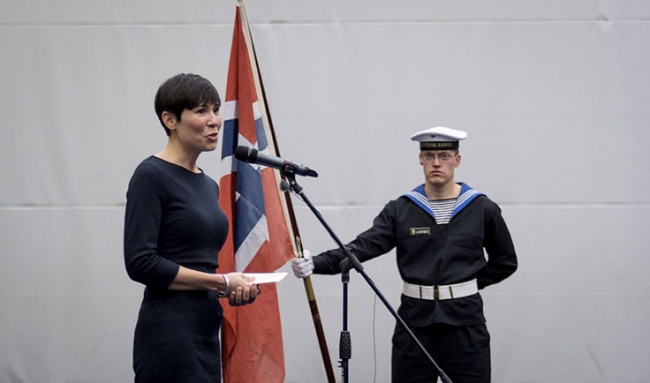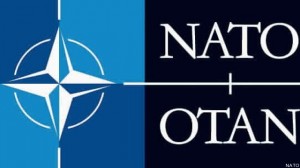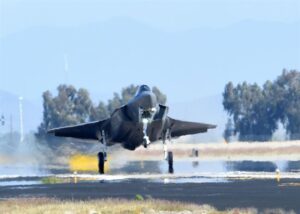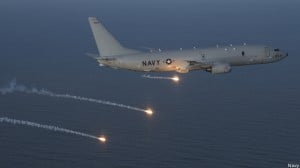Norway: A Model for NATO’s Northern Tier
Posted on
 Norway faces the challenge of crafting a national defense strategy for the 21st strategy in the face of Vlad Putin’s more aggressive Russia.
Norway faces the challenge of crafting a national defense strategy for the 21st strategy in the face of Vlad Putin’s more aggressive Russia.
Because Putin thinks through his use of military power and designs limited objectives to achieve what he considers in the best interest of Russia, Norway faces a double challenge: how to defend itself against the Russian threat and how to work with allies who are not very good at designing limited objectives for the use of military power.
Complicating all this is the fact that Norway’s allies are all in transition: Brexit Britain, Trump America, and an increasingly uncertain European Union. France and with Germany both face crucial elections and significant uncertainty about their economic, political and security futures.
As Norwegian Minister of Defense, Ine Eriksen Søreide put it recently: “It seems we may have arrived at a time in history where the liberal democracy, as we know it, is facing one of its most serious challenges to date. The very framework of a stable Europe and transatlantic relationship is under pressure.”
Within this context, Norway is focused on ways to enhance national security and ways to work with allies. They are doing so with military forces is significant transition as well – the purchase of the F-35 is seen as a key lever for change, much more than any other single asset, but it is part of a process not an additive platform.
“We are clearly modernizing our platforms but we need to transform our force, our culture and our processes as well,” Maj. Gen. Skinnarland, the new Chief of Staff of the Royal Norwegian Air Force told me in a recent interview. “The strategic decisions made in the long-term investment will make us, even though small, one of the most modern air forces in the world in some years to come. It is not just about adding new platforms; it is about shaping joint capabilities for the defense of Norway in a high intensity operational setting.”
 The Norwegians I spoke with on my recent trip underscored the importance of the NATO Treaty’s Article III as a key for the next phase of the alliance’s development, shaping effective ways to defend the nation in a way that allows for greater capability to work with allies. In all the debate about Article V, the importance of Article III as a key to being able to uphold the overall Treaty is often forgotten.
The Norwegians I spoke with on my recent trip underscored the importance of the NATO Treaty’s Article III as a key for the next phase of the alliance’s development, shaping effective ways to defend the nation in a way that allows for greater capability to work with allies. In all the debate about Article V, the importance of Article III as a key to being able to uphold the overall Treaty is often forgotten.
Article III reads: “In order more effectively to achieve the objectives of this Treaty, the Parties, separately and jointly, by means of continuous and effective self-help and mutual aid, will maintain and develop their individual and collective capacity to resist armed attack.”
In my interview with the Norwegian Deputy Minister of Defense in his Oslo office, Mr. Øystein BØ, emphasized the article’s importance: “Article III is the obligation to have a strong national defense and to be able to be a net contributor to security. There is no free ride in NATO, we’ve all got to do our part to be able to defend each other.”
In my interview with Lt. Gen. Jakobsen and the Commander of the Norwegian Joint Headquarter, he characterized the overall approach as follows: “We are creating the new national defense capabilities in order to create a threshold so that a violation of Norwegian territory will not be cost effective. And clearly we cannot do this alone, and hence our NATO membership and engagement with allies is crucial. And with the nuclear dimension, clearly the American relationship along with Britain and France is crucial as well.”
Several speakers highlighted the central significance of distributed strike or shaping a kill web to get maximum effect from the force. The American’s recent Red Flag 17-1 exercise highlighted this capability in terms of working relationships between Typhoons and F-35s, but this was seen by the Chiefs of the Norwegian Navy and Army as requiring a major cultural and technological shift.

First Norwegian F-35A lands
There was a clear sense that the Norwegian and the allies are at the beginning of new phase, not simply shaping an upgraded legacy force. New templates, new ways of thinking are crucial.
A key element is creating, deploying and maximizing new kinetic effects. The Kongsberg role in building missiles for Norway and for key allies is at the heart of the national defense industrial consideration for Norway. Weapons being provided for the F-35 or to the new German submarines are part of this overall effort.
Distributed strike was highlighted throughout in many presentations and the need was seen driven by how the Russians are shaping a bastion force from which they are projecting power. Clearly, this is a task greater than Norway can handle on its own, which means that a new type of defense grid needs to be shaped in the North Atlantic. This is about operational synergy, which won’t come from simply buying an F-35 or a P-8. They are key capabilities but the synergy comes from working with the other F-35 partners in the region (UK, Denmark, the US and the Netherlands), as well as the standing up of a P-8 force to operate in the region with the UK, operating from RAF Lossiemouth in Scotland, the US from Iceland and the Norwegians operating from their own territory.
Rear Adm. Lars Saunes, Chief of the Norwegian Navy, pointed to the F-35s, with their ability to have significant reach through the MADL linkages among the fleet and the ability to process data in real time, as well as the P-8 maritime domain awareness strike platform, which can be cross-linked among Norwegian, American and British platforms.
The role of the UK is seen as of growing significance in the Northern Tier defense efforts, with the coming of the P-8, the F-35 and the Queen Elizabeth carriers. As Keith Eikenes, director of Norway’s Department for Security Policy and Operations, put it in an interview in Oslo prior to the airpower conference:
“The UK bilateral relationship is very significant for Norway. We have a small number of allies, the US and the UK being especially important ones, shaping new capabilities for North Atlantic defense. We are looking at ways to enhance that working relationship. Even when the North Atlantic defense part took a dip after the end of the Cold War, the working relationship with close allies remained.”

P-8 Poseidon
National, allied and partner exercises are crucial means to shape these new ways ahead, and there was a clear sense that finding ways to more effectively train for high intensity operations is important. Also, working with Sweden and Finland is crucial, as is finding ways for Norway to shape a defense concept, one which can reach back to the UK and forward to Finland.
Clearly, NATO is in times of fundamental change and the Norwegians are among the core allies who take the challenge seriously.
“Now, we do not consider Russia a military threat against Norway today. I want to be clear on that. However, Norway is NATO in the North, and we share a border with an increasingly assertive neighbor with superpower aspirations, a neighbor who has modernized its Armed Forces, significantly increased its military presence in the High North, reintroduced the old East versus West schismatic thinking, engaged in subversive actions against Western democracies, violated international law and undermined European stability,” the minister said.
That approach has significance beyond Norway and is relevant to the NATO alliance’s future.
Subscribe to our newsletter
Promotions, new products and sales. Directly to your inbox.
